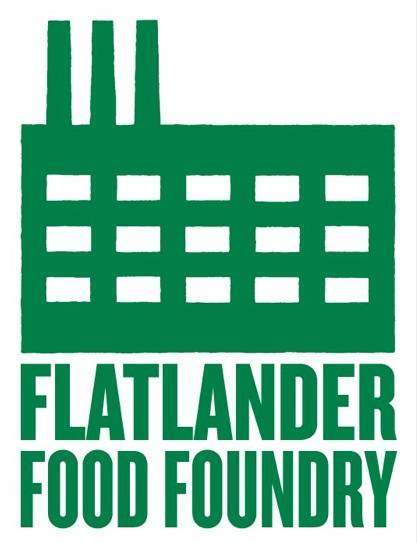
Last Saturday night, I was witness to something that I’d not really ever seen before around Champaign-Urbana. Perhaps it was the fact that we were standing in an 8,000 square foot building that feels more like an art gallery than a home in which to dwell. Perhaps it was that, combined with the intoxicating scent of well-prepared homemade Greek food. Or, perhaps it was the extreme collision in cultures and personalities represented at a fundraiser for what was once a simple idea: the Flatlander Fund, and it is now in its second phase of development.
It’s fitting then, seeing as how the movement has a new name, and a more focused goal, along with a new sense of purpose now that so much has transpired over the course of the ten months since we lost its founder-by-default, Daniel Schreiber.
For those of you just joining the story, you can be brought up to speed here, here, here, and here.
The Flatlander Fund is now The Flatlander Food Foundry — a next step in what will eventually be a “community kitchen, an business incubator, and a place for the culture to spread its wings with food as the centerpiece,” a paraphrase that I am using here, according the more than a few closely tied to the organization. I’ve spoken with so many of them recently, from Jason Berg and Miriam Martincic, to Maurice Meilleur and Laurence Mate, to Bill Cope and Mel Farrell, all lumped into the same group of people who can be attributed some sense of both leadership and action in creating what should be well on its way to completion within the next year.
“We’ve achieved about 30% of our goal thus far, despite a true lack of organization within the organization,” Laurence Mate told me. He is one of the people that spear-headed the movement last Summer, and is known about town as Larbo, or the man who basically breaks down hogs and creates a wide array of charcuterie and then some from its wealth of product.
“Dan might not have expected to see something like this come from what happened, and there might be aspects to it that he may not have fully agreed with, but ultimately, I think it’s honoring what he was hoping to accomplish here.”

Part of what made this night so special was its locale. The house of Mary Kalantzis and Bill Cope is a marvel and a spectacle. There is no other way to describe it without sounding disingenuous. I had multiple conversations with people that night that posed the question:
“Would you want to live here?”
The result was 65/35 or so in favor of it. I found myself in the latter. To me, I want a home that I’d want to wake up in on Christmas morning, and feel like Santa had enjoyed his stay. This house is more of a vacationer’s paradise; an escape from all that is real and worrisome in the world. True and passionate beauty, without the ugliness of a cracked 75-year-old windowsill, or the sound of a tired sump pump whirring in the basement.



But I digress. The house is remarkable. More on that below, but first, the food.

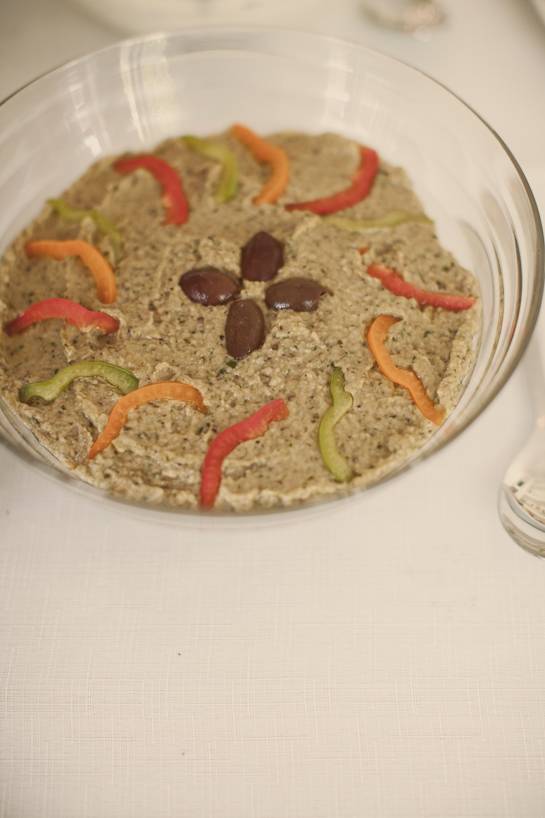
The dinner was called “Philia,” which in Greek translates most commonly to, “Friendship.” And with that in mind, this particular meal was served community style, which is a nice way of saying, as a buffet. Fortunately for us, this food was not like that of Hometown Buffet on North Prospect. It was prepared beautifully and tasted as such. And more than that — it was done so by a Greek family, the Yfantis’, and it was charming to watch them work on it throughout the evening.
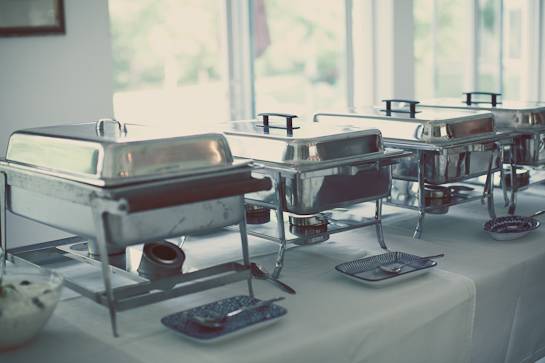

Volunteers kept people full by walking about with plates of zucchini pancakes and skewers of pork and chicken done in the traditional Greek spices and marinade. The dolmades were served in a rich, creamy gravy that gave them an unexpected but delightful heaviness. Heavy is good, in this case.

In addition, pitas brushed with olive oil, eggplant dip, yoghurt sauce, and green beans were all on the menu as well.

My one complaint — and it’s one that I simply must address — is the lack of lamb on the menu. When I think Greek food, my salivary glands need lamb. My wife is from a Greek family, primarily. They eat lamb. When I want a pita stuffed with something, I want it stuffed with roasted lamb. And I think that was missing from this menu.
But that’s just me. I like lamb.
Moving beyond that, everything was top notch.
Wines were provided by Corkscrew, and I didn’t try the white because I don’t drink that shit, but the red was good, and by that I mean, it tasted delicious and not like rubbing alcohol at all. That’s the key.

As the night wore on, and people started getting comfortable (i.e., lit up), more and more people started to interact. In truth, this cross section of Champaign-Urbana is a little uncommon; there was definitely a bit of wealth present at this dinner, and rightfully so — but there was also a lot of the Middle Class represented as well. And whereas at times a Caste System feel can start to creep in, and despite the almost elite and effete surrounding of the residence, not one person in our group felt any sense of pretension at all. In fact, it was so laid back, it felt almost as if we were about to make some goddamned S’mores and sing a Dylan tune or two.

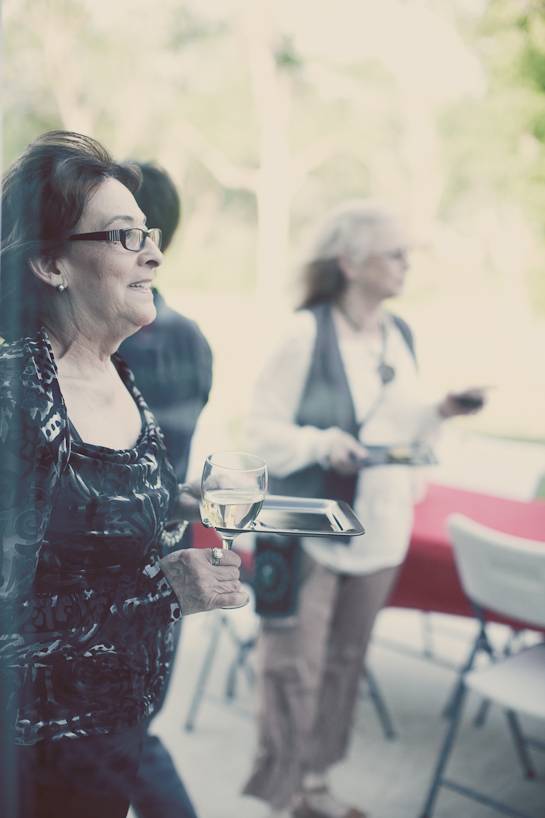


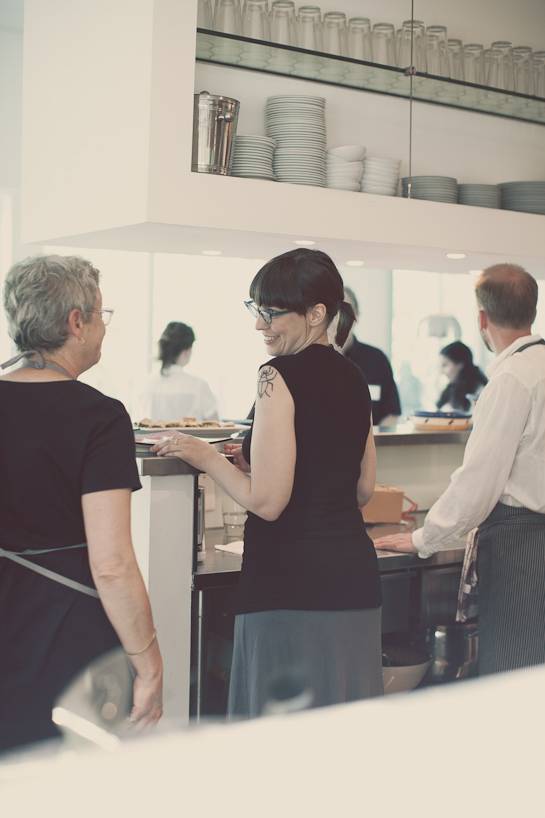
Having poured more than a few glasses of vino down the hatch, I couldn’t help but seek out Dr. Bill Cope, a research professor in the College of Education, who had been wandering around all night, making nice with just about anyone that took a moment to thank him for allowing us to turn his home into a house party for the night. He was gracious with everyone, and made all who approached feel incredibly welcome.
 So, when I told him who I was and that I was writing a piece for Smile Politely, I was pleased as punch to learn that the native Australian had not only heard of us, but was delighted by our work.
So, when I told him who I was and that I was writing a piece for Smile Politely, I was pleased as punch to learn that the native Australian had not only heard of us, but was delighted by our work.
And here, all I wanted to know was when the house was built?
We sat down and I asked him just a few basic questions, first about the design of the house, and its construction, and then, more about Flatlander, and about how he sees it playing a role in moving forward as the Foundry and not just the Fund.
On when the house came to be: “The house was completed about 18 months ago,” he told me. “We’ve been in it for that long, and we started construction about the end of 2007 or so I think, so it took some time.”
On its design and who created it: “We designed it. I’m really just a failed architect, and this house is something of a continuation on what we’ve done in the past, in Melbourne, really.”
On its structure and concept: “It’s a solid mass of concrete here. The house is built on top of that, and the flooring is solid all the way around. There are no windows in the house, just doors that open — 94 to be exact — all of the same specifications. It’s consistent throughout.”
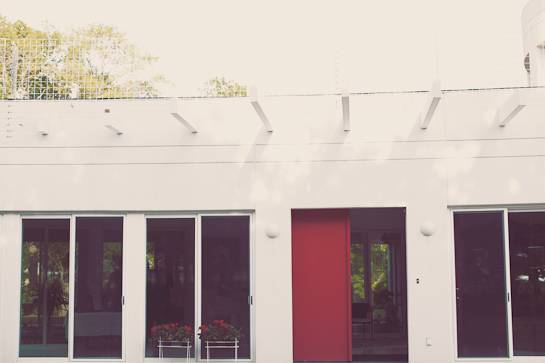
On its relationship to the prairie: “The home sits at 721 feet above sea level, which is the height of the prairie. We felt like that was an important aspect of its construction.”
On how food can change the culture: “I read an article recently on NPR and the headline was ‘Food is the new oil’ and I tend to agree. How we pursue food and its location and its relationship to the people that surround it will be a very big issue; it’s already a big issue.”
On his home and its place in Champaign-Urbana: “We very much want for this to be a place where people can host fundraisers. We built it with the intention of using it to the community’s advantage. With Mary being the Dean of Education, and with my research work, and how it all ties into hosting parties and people from out of town, it just made sense to construct a home that we could share with the community.”
On his favorite restaurants in town: “The same ones you like, the ones everyone likes: bacaro, KoFusion, all of them. There is a lot more decent food being served in this town than people think.”

I wonder if Dan Schreiber truly knew how far his vision would reach in such a short span of time? Did he realize that his death could be the binder that the community needed to put something like this together? Was he aware of just how intoxicating his message to the community was? That is was representative of the chocolate he had created?
Did he know that some of the most educated and progressive people in town would come together to start to create what is fast becoming one of the most important and revolutionary concepts around?
That we’ll never know makes it all the more important that we continue to pursue this goal. Having spoken with a number of people who had been newly introduced to Flatlander by way of their relationship with the owners of the house, or by people who had decided just recently to lend their support, one thing is certain: it’s a movement that isn’t going anywhere but up.
I can’t wait to see this type of ambition put into action. The walls inside the Foundry will likely be a revelation. I am sure of it.
Photos by Justine Bursoni








